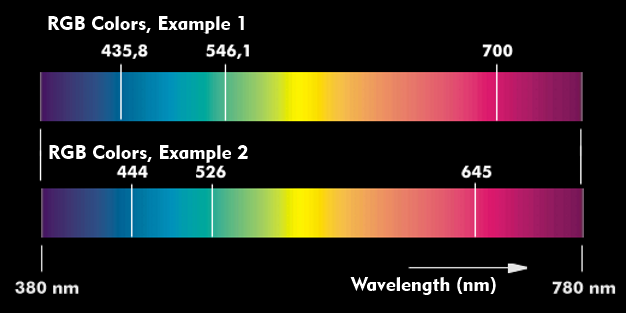red, green, blue (RGB)
Red, green and blue (RGB) are the primary colors of the RGB color model, which is used in additive color mixing with emitting colors. This is the case in displays and in color television technology. To ensure that the three primary colors cover as large a color space as possible, the wavelengths for the emission of the phosphors play an essential role.
One requirement for the choice of spectral colors is that the third primary color cannot be generated from two primary colors. As a further requirement, it should be possible to represent as large a color space as possible with the three spectral colors.
For the three primary colors red, green and blue, there are several wavelengths that fulfill these requirements. For example, blue can have wavelengths of 435.8 nm, green 546.1 nm and red 700 nm. The requirements mentioned are also fulfilled by blue with 444 nm, green with 526 nm and red with 645 nm. It is therefore a question of the available phosphors and the estimation of the color space for which of the possibilities one decides. Internationally, a wavelength of 700 nm has been specified for red (R), 546 nm for green (G) and 436 nm for blue (B).
Since the different approaches have different effects in color representation, Standard RGB( sRGB) was used to define colors that are uniform for all manufacturers and leave no room for interpretation.

